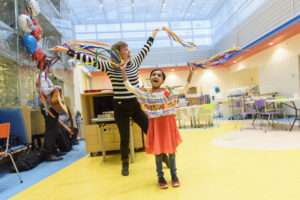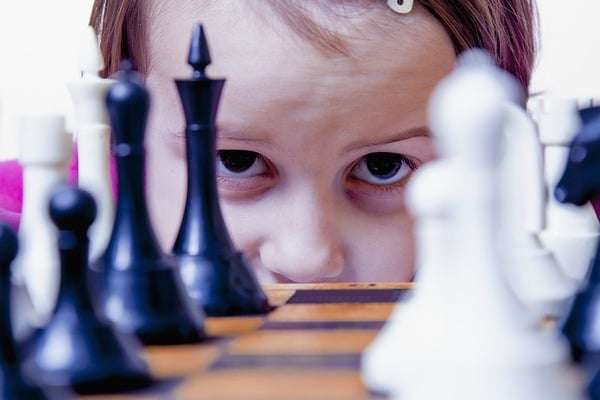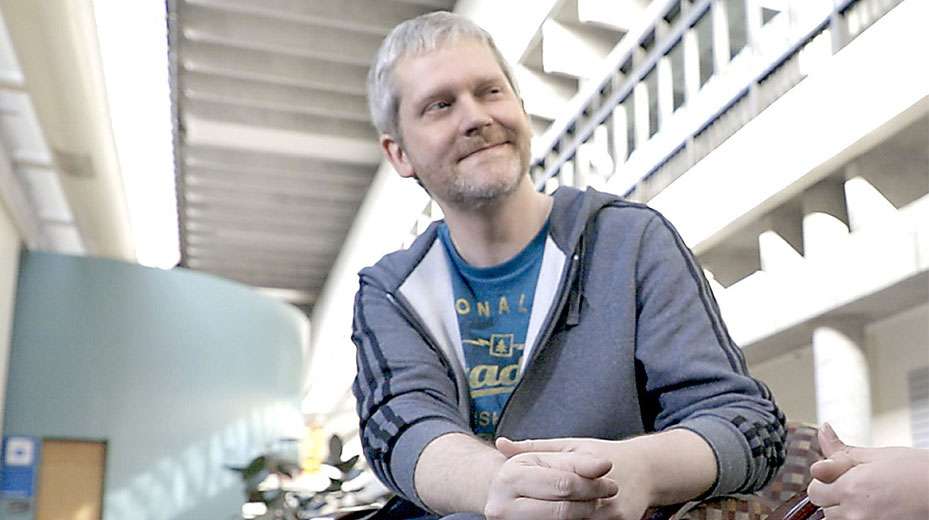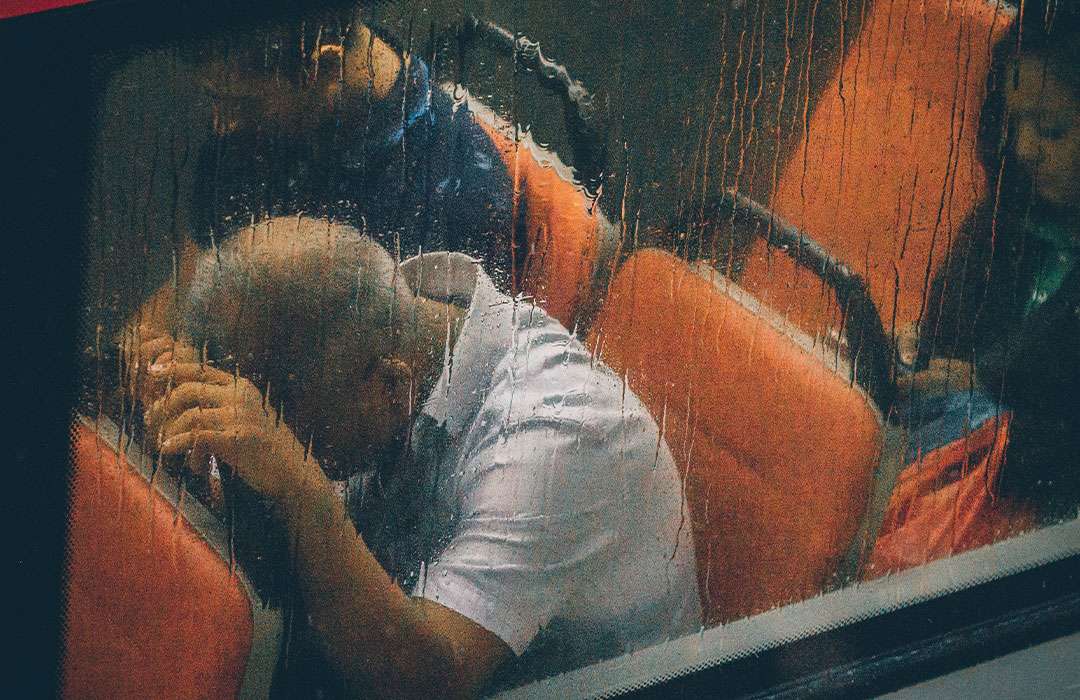
General Questions
What is dance/movement therapy?
The American Dance Therapy Association (ADTA) defines dance/movement therapy as the psychotherapeutic use of movement to promote emotional, social, cognitive and physical integration of the individual.
Dance/movement therapy is:
-
Focused on movement behavior as it emerges in the therapeutic relationship. Expressive, communicative, and adaptive behaviors are all considered for group and individual treatment. Body movement, as the core component of dance, simultaneously provides the means of assessment and the mode of intervention for dance/movement therapy.
-
Practiced in mental health, rehabilitation, medical, educational and forensic settings, and in nursing homes, day care centers, disease prevention, health promotion programs and in private practice.
-
Effective for individuals with developmental, medical, social, physical and psychological impairments.
-
Used with people of all ages, races and ethnic backgrounds in individual, couples, family and group therapy formats.
What do dance/movement therapists do?
Dance/movement therapists focus on helping their clients improve self-esteem and body image, develop effective communication skills and relationships, expand their movement vocabulary, gain insight into patterns of behavior, as well as create new options for coping with problems. Movement is the primary medium dance/movement therapists’ use for observation, assessment, research, therapeutic interaction and interventions. Dance/movement therapists help develop treatment plans and goals, document their work in clinical records and collaborate with professionals from other disciplines.
Where do dance/movement therapists work?
Dance/movement therapists work in a variety of settings including nursing homes, schools, psychiatric, rehabilitation and medical facilities, drug treatment centers, counseling and crisis centers, and wellness and alternative health care centers.
What does a dance/movement therapy session look like?
The extensive range of dance/movement therapy techniques and the needs and abilities of participants allow for a wide variety of movement activities in dance/movement therapy sessions. Dance/movement characteristics, from subtle and ordinary movement behaviors to expressive, improvisational dancing could occur.
To learn more about the ways in which dance/movement therapists work, go to the ADTA YouTube page and Profiles of DMTs.
Becoming a Dance/Movement Therapist FAQs
How can I become a dance/movement therapist?
There are two routes one can pursue to become a dance/movement therapist. View the R-DMT Applicant Handbook for an in-depth guide of requirements.
#1: ADTA Approved Graduate Program
Graduates of approved programs meet all professional requirements for the Registered Dance/Movement Therapist (R-DMT) credential. Please contact the school directly for application process, requirements, etc.
#2: Alternate Route
The Alternate Route is defined as a Master’s degree with dance/movement therapy training from qualified teachers. Other requirements include movement observation and assessment, psychology coursework, fieldwork, internship, and dance experience.
What degree/credential do dance/movement therapists receive?
The dance/movement therapy credential is awarded at the graduate level. Therefore, a Master’s degree is required. Upon completion of an ADTA Approved Graduate Program or the Alternate Route and acceptance by the Dance/Movement Therapy Certification Board, the Registered Dance/Movement Therapist (R-DMT) credential is awarded. R-DMT represents attainment of a basic level of competence, signifying both the first level of entry into the profession and the individual’s preparedness for employment as a dance/movement therapist within a clinical and/or educational setting. The Board Certified Dance/Movement Therapist (BC-DMT) credential can be obtained after the R-DMT is awarded, with additional requirements and experience. BC-DMT is the advanced level of dance/movement therapy practice, signifying both the second level of competence for the profession and the individual’s preparedness to provide training and supervision in dance/movement therapy, as well as engage in private practice.
What undergraduate degree should I pursue?
At the undergraduate level, there is no specific degree required. However, it is a good idea to have substantial exposure to topics related to both dance and psychology. For specific prerequisites, contact each ADTA Approved Graduate Program.
Where can I find information on how to volunteer/shadow a dance/movement therapist?
Opportunities to volunteer/shadow a dance/movement therapist are limited due to the nature of the work and the need for confidentiality. If you are interested in volunteering/shadowing, contact your region’s Member-at-Large or a local chapter.
What kinds of experience would be helpful for a future dance/movement therapist?
It is strongly encouraged to pursue a broad practice in dance, including a variety of dance styles and techniques, choreography, performance, and teaching. For education, focus on psychology courses and a course in kinesiology and anatomy. Helpful experience would include working or volunteering with people in various human service settings (i.e. summer camps, schools, hospitals, nursing homes).
How long does it take to become a dance/movement therapist?
If attending an ADTA Approved Graduate Program, expect to be in school for two to three years, full-time. For the Alternate Route, the length of time depends on many factors, such as committing full or part-time, location of courses (some travel may be required), when courses are offered, when the individual can attend, etc.
What school would you recommend?
Attending any of the ADTA Approved Graduate Programs provides in-depth knowledge and training from exceptional, experienced, board certified dance/movement therapists. The ADTA suggests contacting and/or visiting the school(s) to help decide if the institution is a good fit.
What does approval of graduate programs mean?
The ADTA approves programs that meet the requirements stated in the ADTA Standards of Education and Clinical Training. Graduates of approved programs meet all educational requirements for the Registered Dance/Movement Therapist (R-DMT) credential.
Where can I find a list of Alternate Route offerings in my area?
Ongoing Alternate Route course offerings can be found in the Alternate Route Course Calendar and in the Alternate Route Graduate Coursework documents contained on the Alternate Route page. Also, check the Announcements section under the Forum, ADTA on Facebook, and ADTA LinkedIn.
Where can I find information on licensure requirements?
Licensure requirements vary state by state. Contact your state licensing board directly. Find your state’s board on the State Professional Counselor Licensure Board List.

Dance/movement therapy, usually referred to simply as dance therapy or DMT, is a type of therapy that uses movement to help individuals achieve emotional, cognitive, physical, and social integration. Beneficial for both physical and mental health, dance therapy can be used for stress reduction, disease prevention, and mood management. In addition, DMT’s physical component offers increased muscular strength, coordination, mobility, and decreased muscular tension. Dance/movement therapy can be used with all populations and with individuals, couples, families, or groups. In general, dance therapy promotes self-awareness, self-esteem, and a safe space for the expression of feelings.
What Kind of Issues Can Dance Therapy Help With?
Dance therapists work with people in therapy to help them improve their body image and self-esteem. Dance/movement therapy is a versatile form of therapy founded on the idea that motion and emotion are interconnected. The creative expression of dance therapy can bolster communication skills and inspire dynamic relationships. It is commonly used to treat physical, psychological, cognitive, and social issues such as:
Physical Issues:
- Chronic pain
- Childhood obesity
- Cancer
- Arthritis
- Hypertension
- Cardiovascular disease
Mental Health Issues:
Find a Therapist
Advanced Search
Cognitive Issues:
Social Issues:
How Effective Is Dance Therapy?
Research has demonstrated that dance therapy can be effective in the treatment of mental health issues like disordered eating, depression, and anxiety. Some recent examples include:
- A study from the journal The Arts in Psychotherapy (2007) found that dance therapy had a positive effect on participants experiencing symptoms of depression.
- A study from the American Journal of Dance Therapy (2004), in which 54 students participated in a dance therapy violence prevention program, found that aggression among participants decreased and pro-social behaviors increased.
- A study from Alzheimer’s Care Today (2009) suggests that DMT can directly improve memory recall in people with dementia.
- A literature review from the American Journal of Dance Therapy indicated that DMT may be a treatment option for children on the autism spectrum.
- Due to its social and physical components, dance/movement therapy is also being considered as a treatment option for childhood obesity.
Although further research is needed to determine how effective DMT can be in other settings, it continues to show promise as a viable treatment modality for many physical and mental health issues.
Principles of Dance Therapy
DMT sessions often include observation, assessment, warm-ups, interventions, verbal processing, and warm-down phases focused on closure. Sessions can be highly structured or non-directive and may be conducted individually or in groups. Although each dance/movement therapist will have his or her own style, certified dance/movement therapists adhere to the following mission and theoretical principles:
Mission:
- Facilitate life-span development.
- Prevent, diagnose, and treat issues that interfere with healthy functioning.
- Assess, evaluate, and develop treatment goals.
- Implement planned interventions.
- Develop and adjust treatment to continuously meet the needs of the client.
Key Principles:
- Body and mind are interconnected so that a change in one impacts the other.
- Movement can express aspects of the personality.
- Part of the therapeutic relationship is communicated through non-verbal means.
- Movements can be symbolic and can represent unconscious material/processes.
- Movement improvisation/experimentation can bring about new ways of being.
How Is Dance Therapy Different from Regular Dancing?
Most people understand that dancing can be good for their health; it improves cardiovascular endurance, muscle tone, balance, and coordination. Dance can also boost a person’s mood, improve his or her body image, and provide an opportunity for fun that may lower overall stress and anxiety. While these elements are certainly beneficial, dance/movement therapy takes therapeutic dance to another level.
People in treatment with a qualified dance therapist have the right to confidentiality, and dance therapists provide a safe space for people to express themselves. Movement becomes more than exercise—it becomes a language. People in treatment communicate conscious and unconscious feelings through dance, which allows a therapist to respond in kind. Dance therapists help people work on issues through the use of a “movement vocabulary” that is centered around physical expression instead of words.
Dance/movement therapists assess body language, non-verbal behaviors, and emotional expressions. Treatment interventions are tailored to address the needs of certain populations. Some intervention examples may include:
- Utilizing “mirroring” (matching/echoing the person’s movements) to illustrate empathy for an individual and validation of his or her experience.
- Incorporating jumping rhythms into a dance with a group of people experiencing depression because research has shown decreased levels of vertical movement in people with depression.
- Making use of a “movement metaphor” to help a person physically demonstrate a therapeutic challenge or achievement (e.g. the therapist gives the person in treatment a white flag prop to help him or her celebrate an emotional surrender).
History and Philosophy of Dance Therapy
The roots of dance therapy can be traced back to the modern dance movement of the 19th century. The movement grew from the idea that dance could go beyond simple entertainment and be used as a form of communication and expression. In other words, emotional content was infused into dance. By the middle of the 20th century, the modern dance movement had laid the groundwork for dance therapy pioneers Marian Chace, Mary Whitehouse, and Trudy Schoop. They formed the foundation for dance therapy through the addition of observation, interpretation, and the manipulation of dance elements into the practice.
In the 1940s, dance therapy was influenced by psychodynamic theory. In the 1960s, research on non-verbal behavior and the role of the body in mental health issues influenced the practice as well. In 1966, the American Dance Therapy Association (ADTA) was established and with it came the development of training and certification standards for the field.
Today, dance therapy is influenced by an eclectic grouping of theoretical frameworks including psychodynamic theory, Gestalt theory, and humanistic theory. But regardless of theoretical approach, all dance therapists must pursue graduate training in order to become certified dance/movement therapists. They can earn either the R-DMT (Registered Dance/Movement Therapist) credential, or the BC-DMT (Board-Certified Dance/Movement Therapist) credential.
You can search for a dance therapist in your area with GoodTherapy.org’s Advanced Search option. Select dance therapy from the “type of therapy” field.
References:
- About Dance/Movement Therapy. (n.d.). Retrieved from http://www.adta.org/about_dmt
- American Dance Therapy Association. (n.d.). Scope of Practice Definition for Dance/Movement Therapy. Retrieved February 13, 2015, from http://www.adta.org/Resources/Documents/Scope%20of%20Practice%20Definition%20for%20DMT.pdf
- Cruz, R. F. (2001). Perspectives on the profession of dance/movement therapy: past, present, and future. Bulletin of Psychology and the Arts, 2(2), 74-78. Retrieved from http://dtaa.org.au/wp-content/uploads/2014/07/WingsofSupport.pdf
- Dance/Movement Therapy and Eating Disorders (n.d.). Retrieved from http://www.adta.org/Resources/Documents/infosheetDMT-EatingDisorders.pdf
- Dance Therapy. (2008). Retrieved from http://m.cancer.org/treatment/treatmentsandsideeffects/complementaryandalternativemedicine/mindbodyandspirit/dance-therapy
- Dayanim, S. (2009, April). The acute effects of a specialized movement program on the verbal abilities of patients with late-stage dementia. Alzheimer’s Care Today, 10(2), 93-98. Retrieved from http://www.adta.org/Resources/Documents/Dayanim%20Alzheimers%20study.pdf
- Goodill, S., Cruz, R., Armeniox, L., Kirschenmann, A., Kornblum, R., & Mandlawitz, M. (2013, April). Dance/Movement therapy and obesity in children and adolescents. Retrieved from http://www.adta.org/Resources/Documents/DMT%20and%20Childhood%20Obesity%20White%20Paper%208-13.pdf
- Koch, S. C., Morlinghaus, K., & Fuchs, T. (2007). The joy dance: specific effects of a single dance intervention on psychiatric patients with depression. The Arts in Psychotherapy, 340-349.
- Koshland, L., & Wittaker, J. B. (2004). PEACE through dance/movement: evaluating a violence prevention program. American Journal of Dance Therapy, 26(2), 69-89.
- Levy, F. J. (1988). Dance Movement Therapy: A Healing Art. Reston, VA: The American Alliance for Health, Physical Education, Recreation, and Dance.
- Meekums, B. (2002). Dance movement therapy: a creative psychotherapeutic approach. London, England: Sage Publications.
- Payne, H. (1992). Dance movement therapy: theory and practice. New York, NY: Brunner-Routledge.
- Scharoun, S. M., Reinders, N. J., Bryden, P. J., & Fletcher, P. C. Dance/movement therapy as an intervention for children with autism spectrum disorders. American Journal of Dance Therapy, 209-228. doi:10.1007/s10465-014-9179-0
- The Healing Power of Dance. (2003). Retrieved from http://www.reintegration.com/health/









